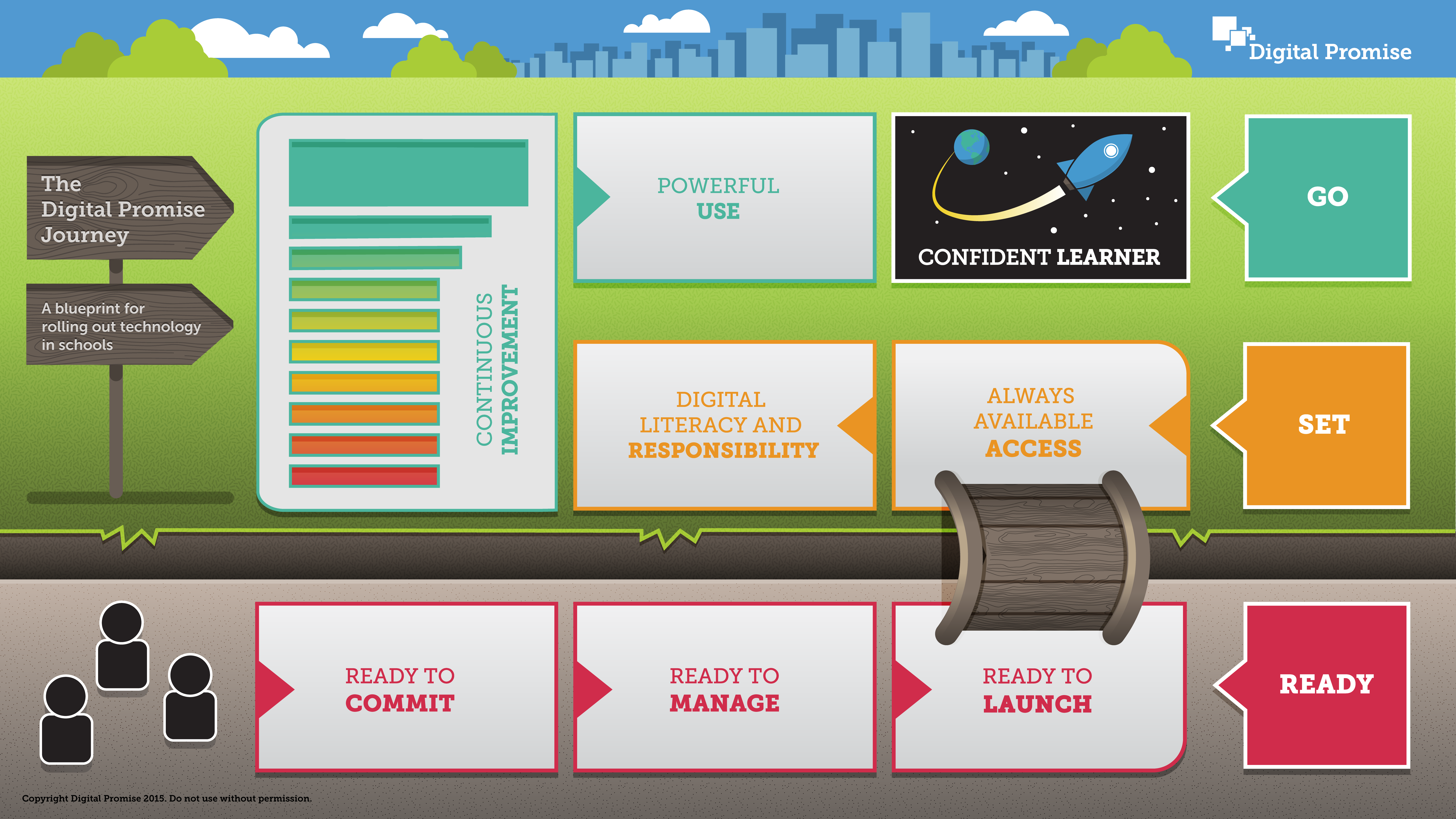The purpose of this starter kit is to support schools who are trying to close the Digital Learning Gap. By sharing the challenges and solutions from our participating schools, we hope to create the ultimate blueprint for how to use technology for learning.
Each of the chapters below represents a section of the journey our schools share. We’ll add new resources on an ongoing basis; click here to sign up for updates!

The way people find and share information has changed, and learning opportunities are everywhere. We’re working with our schools to build the ultimate blueprint for rolling out and using technology in schools.
An effective plan requires buy-in and participation from everyone. Some of the biggest lessons learned from our schools include the importance of a storytelling strategy and strong student leadership teams.
Let’s get technical. To support powerful use of technology, you’ll need powerful infrastructure. Some of the biggest lessons learned from our schools include the importance of a mobile device management system and a clear device incident workflow.
You’ve closed the digital divide and every learner now has access- at school and at home. Now what? How will the classroom change? How will home life change? What are the first things to think about during this shift?
Learners need more than access; they need to know how to use technology to learn. In this phase, teachers are beginning to give students the freedom to explore and evaluate resources themselves. Here are some of their lessons learned.
How do you know if you’re successful? How do you turn your needs and concerns into victories and lessons learned? In this section, we explore the strategies our schools are using to collect and share meaningful feedback.
What does powerful use of technology for learning look like? When we are totally connected and information is always accessible, classrooms change. The questions we ask our learners need to change as well! Here are examples of what learning in this new world can look like.
A confident learner is someone who believes she/he can select challenges to solve, connect with people and resources, and reflect and share victories and lessons learned. This is our end goal, and this is why we do what we do.
Let's connect and we'll send you the latest from Digital Promise.